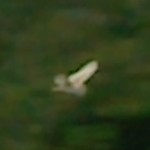Tytonidae: Barn Owl Family
The term ‘Barn Owl’ actually refers to a whole group of owls that belong to the owl family ‘Tytonidae’. There are two families or groups of owls, the barn owls (Tytonidae) and the true or typical owls (Strigidae).All barn owls generally have a large heart-shaped face and are medium to large owls. They have powerful legs with strong talons. They are generally nocturnal and will either live in pairs or on their own.
There are two living subfamilies of the Tytonidae (Barn owl) family: the first being the Tytoninae (Tyto Owls) family of owls, and the second being the Phodilinae (Bay Owls) family. However, the Sibley-Ahlquist Taxonomy of Birds say that the bird family Caprimulgiformes should also be a part of the Owl order, and the barn owls should be a subfamily of Tytoninae. This classification is unsupported by recent research.
There are 16 living species of the Tytoninae Barn owl, many of which have been studied very little or not at all. The most common owl belonging to the Tytonidae family is the Common Barn Owl which is one of the best known species of owl world-wide. There are actually some sub-species of the Common Barn Owl which aren’t known very well, and some scientists say that they ought to be a separate species and not a sub-species.
Examples of Tyto owls are the common barn owl, the sooty owl, Madagascar red owl and the golden-masked owl.
Of the Phodilinae owls (bay owls) there are far less species, one out of three already being extinct.
There are currently 5 barn owl species that are threatened and in danger of becoming extinct.
There are also two extinct subfamilies of barn owls: the Necrobyinae family and the Selenornithinae family. These owls are known mainly through their fossilized remains.
Barn owls inhabit many places across the world; the only exceptions being places such as the northern parts of North America, Saharan Africa and large areas or Asia. The different species within the Tytonidae family are adapted to their environment, with some inhabiting deserts and others living in forests.
The colour of barn owls in general can range from a pure white to a dark brown through many shades of musty orange and red. In general barn owls are darker on their backs, and have lighter coloured faces to the rest of their body.
Like other owls, barn owls are birds of prey. Many eat rodents and insects.
 August 2, 2010
·
August 2, 2010
·  Maddia (Admin) ·
Maddia (Admin) ·  Comments Closed
Comments Closed
 Tags: barn owls, birds of prey, common barn owls, owls · Posted in: Owls
Tags: barn owls, birds of prey, common barn owls, owls · Posted in: Owls



